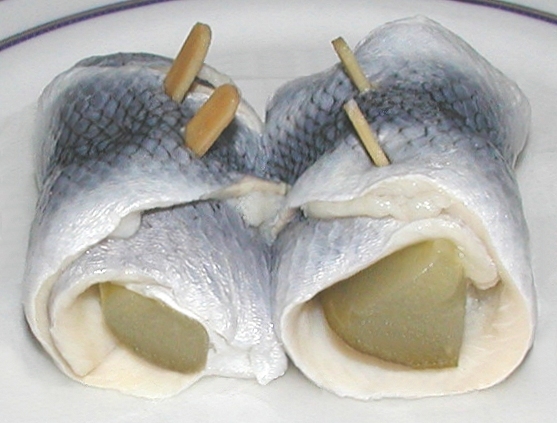Facts About Rollmops
Rollmops are a delectable treat made from pickled herring fillets, neatly rolled into a cylindrical shape. They often include a flavorful filling like sliced pickled gherkins or green olives stuffed with pimento. Typically, you’ll find them skewered with a cocktail toothpick, ready to be enjoyed straight from jars or tubs available at the store.
The brine that imparts rollmops their distinctive flavor is a blend of water, white vinegar, and salt, often enhanced with sugar, onion rings, peppercorns, and mustard seeds. They are best enjoyed cold, either on their own or as a topping on bread. Once opened, they keep well in the refrigerator for several weeks. Occasionally, rollmops are served alongside a dish called Labskaus.
The term "rollmops" originates from German, where "rollen" means "to roll" and "Mops" translates to "pug dog." In Dutch, they are called "rolmops" in singular and "rolmopsen" in plural. In English, "rollmops" is commonly used as a plural form, but "rollmop herrings" might also be heard.
Pickled herrings, including rollmops, have been a staple in Northern European diets since Medieval times. They were particularly valuable for preserving and transporting fish, crucial during meatless periods like Lent. Rollmops became especially popular in Germany during the early 19th century, owing to the expanding railway system that facilitated the transport of herring from the North and Baltic seas to inland areas. They became a Berlin specialty, often seen in pubs displayed in glass cases known as "Hungerturm." Today, they are also a common part of the German hangover breakfast, known as "Katerfrühstück."
Beyond Germany, rollmops are enjoyed across Europe, in parts of South America, the United States, and Canada. In the Czech and Slovak Republics, they are called "zavináč" and are so beloved that the name even inspired the local term for the "@" symbol.

 Slovakia
Slovakia